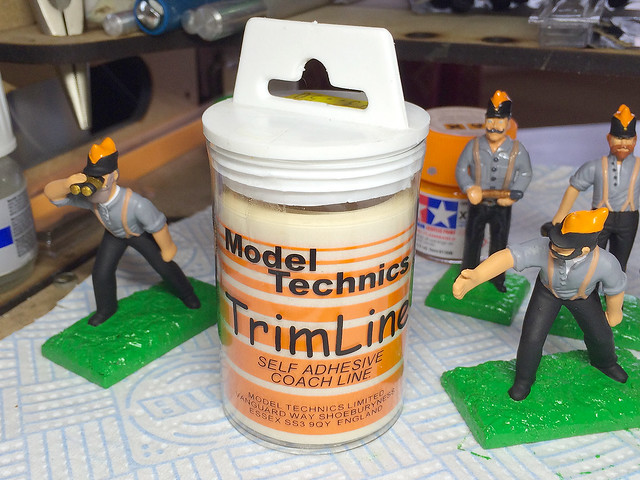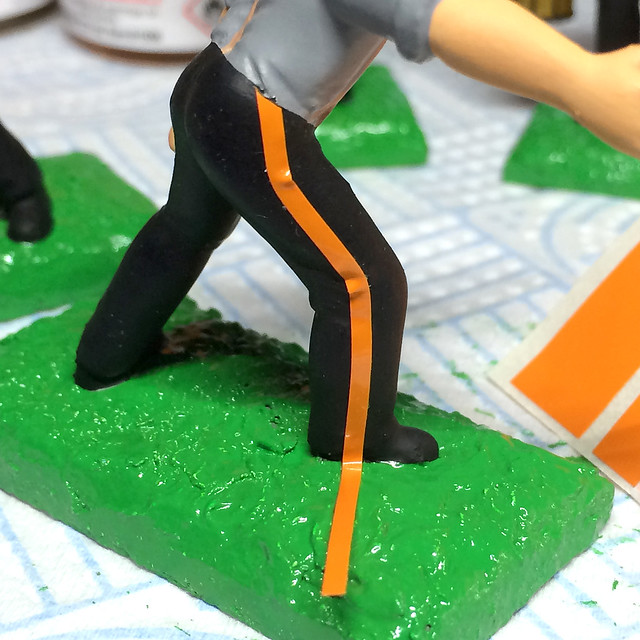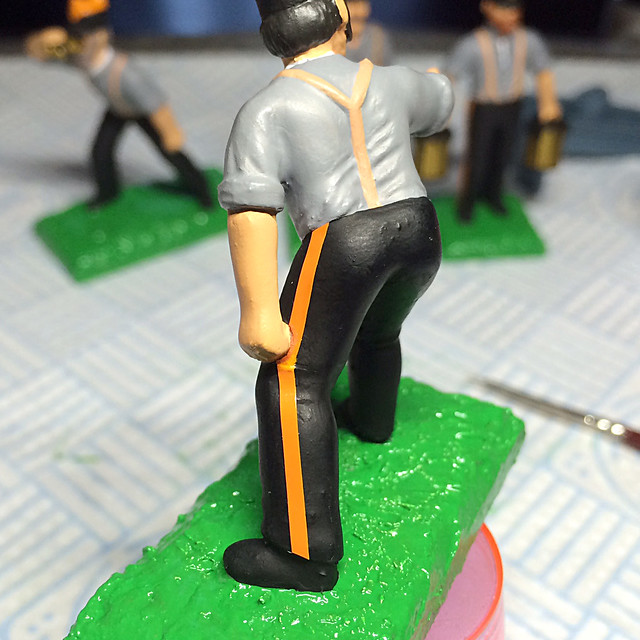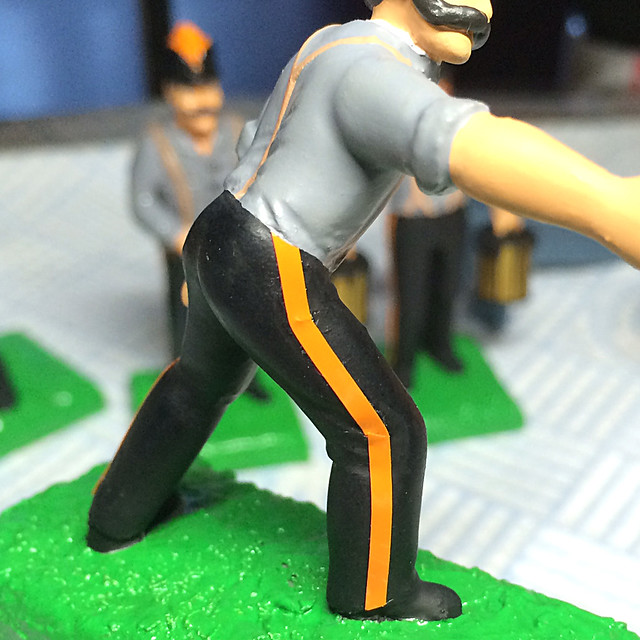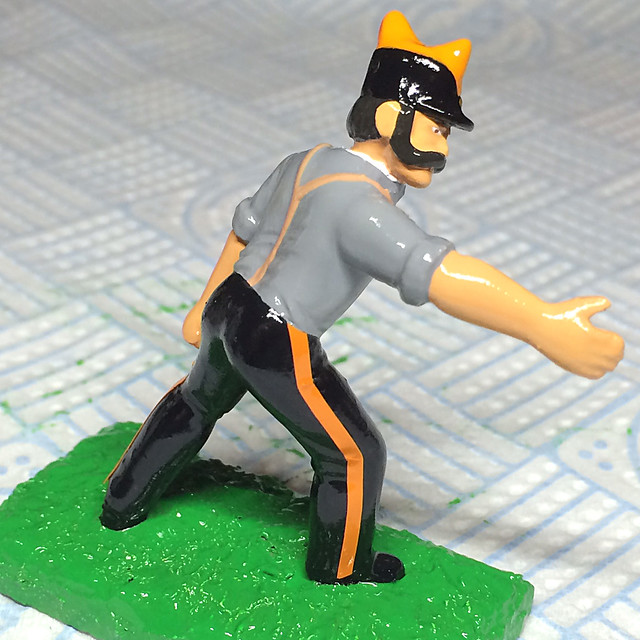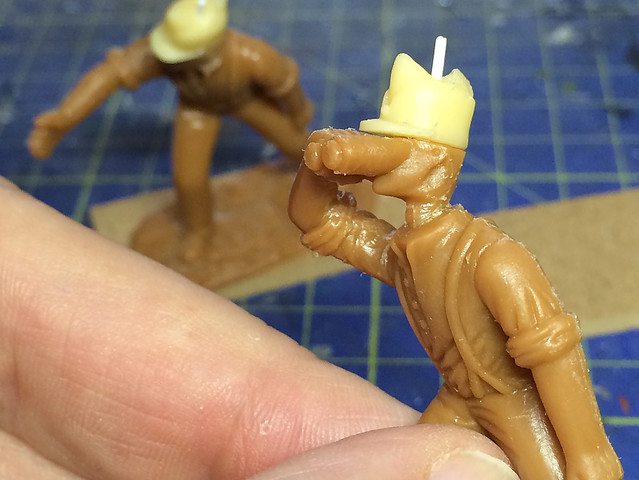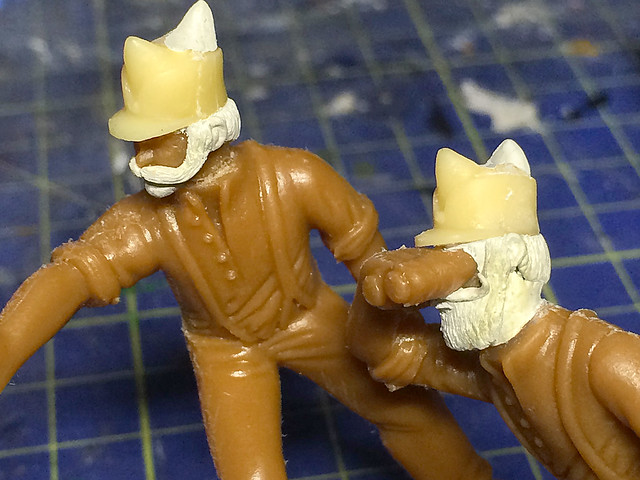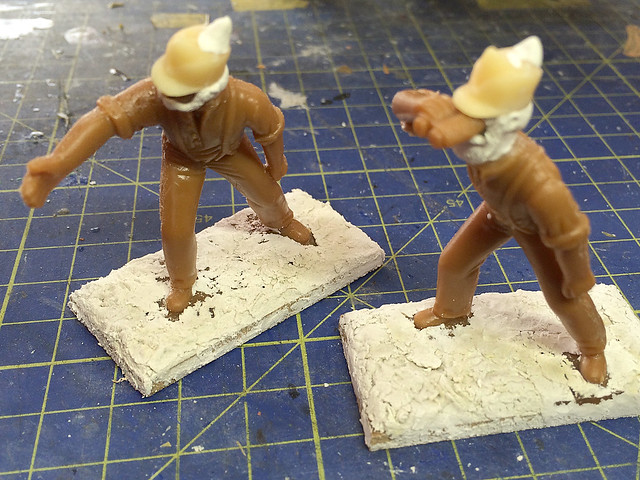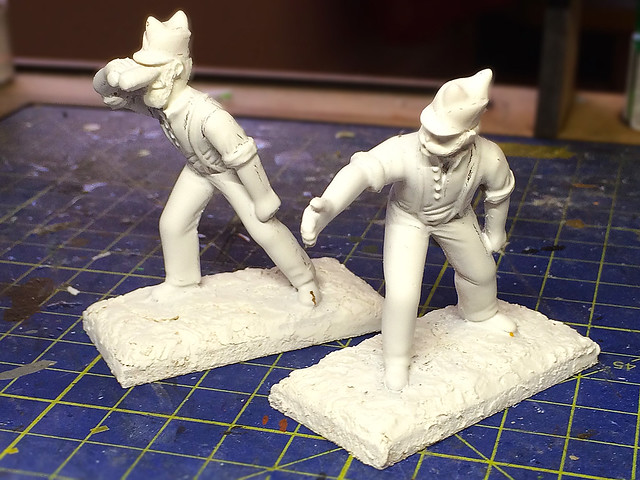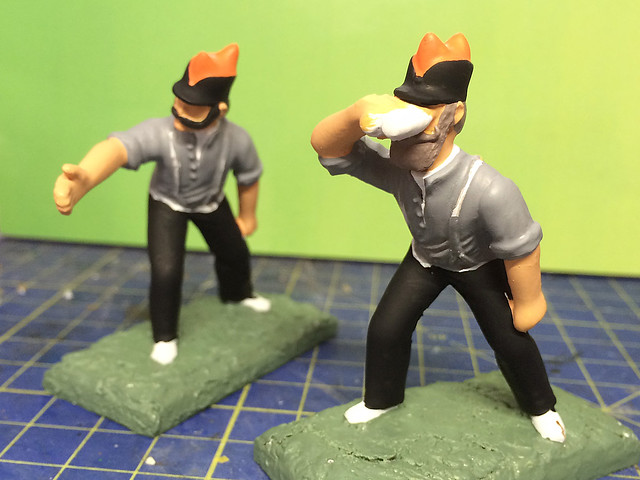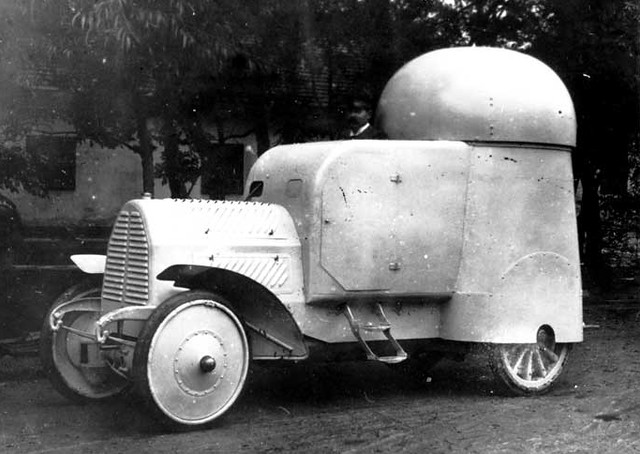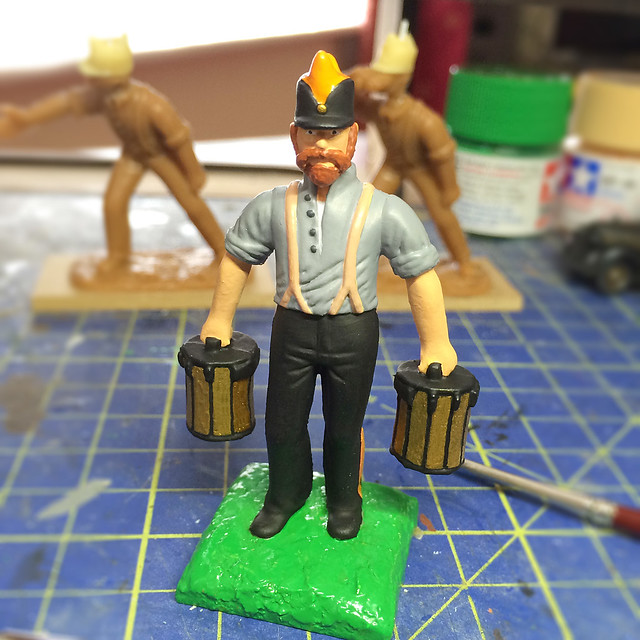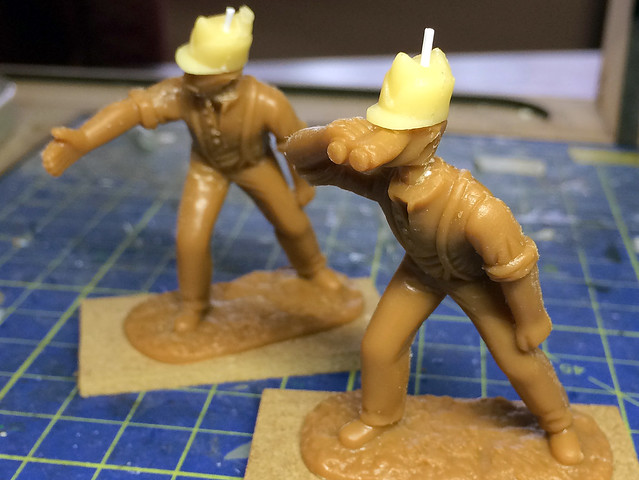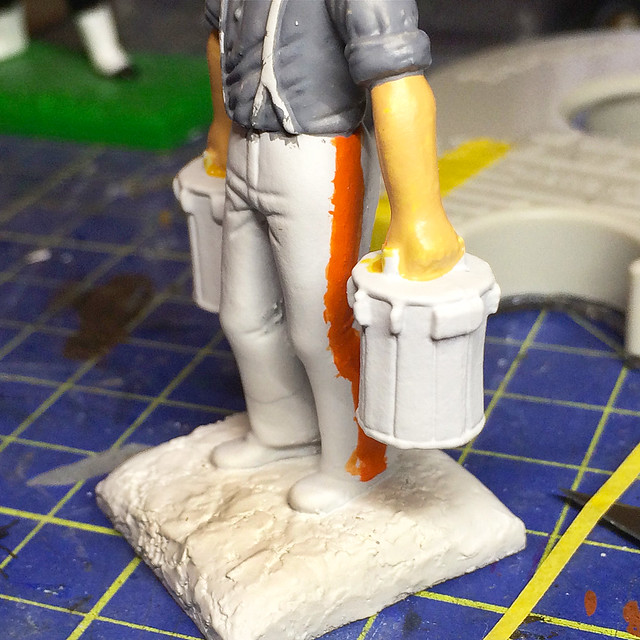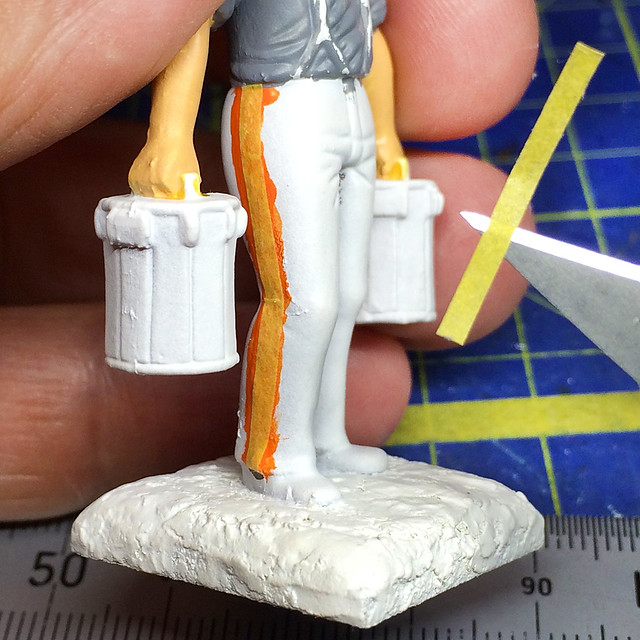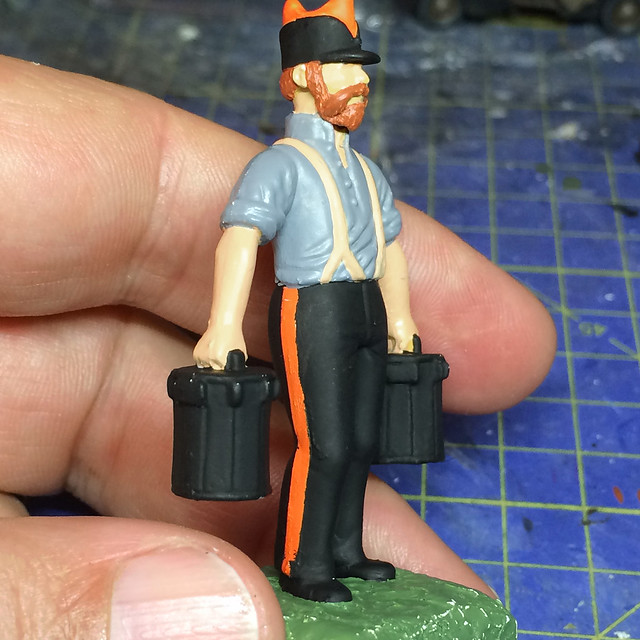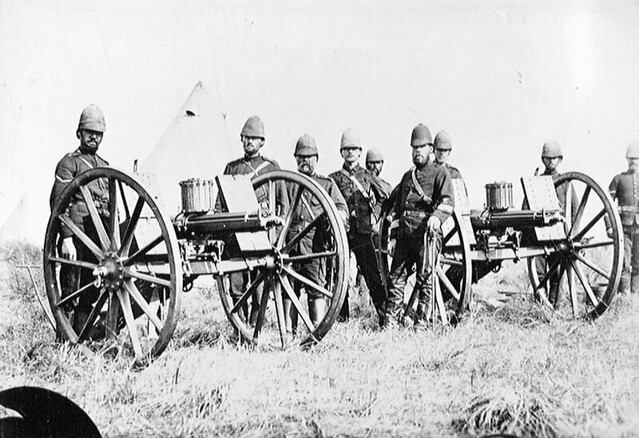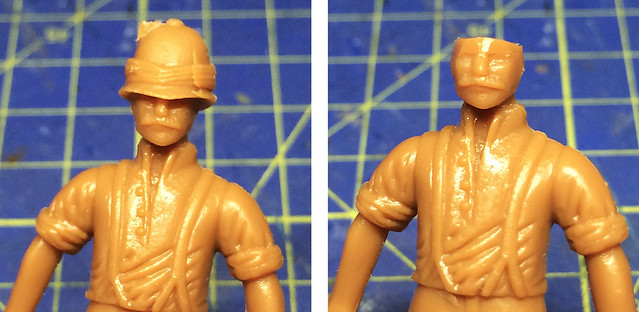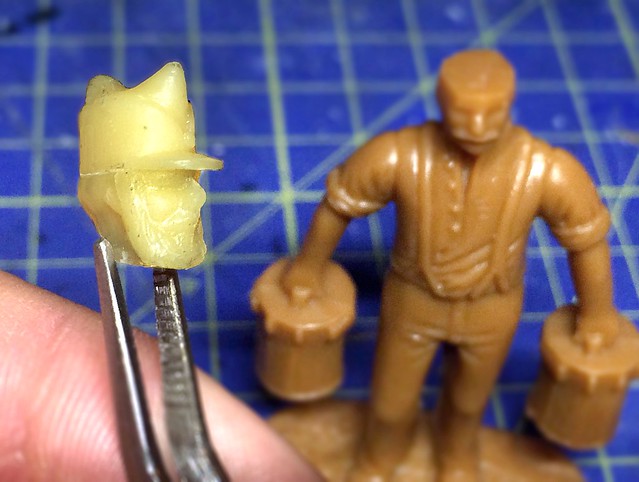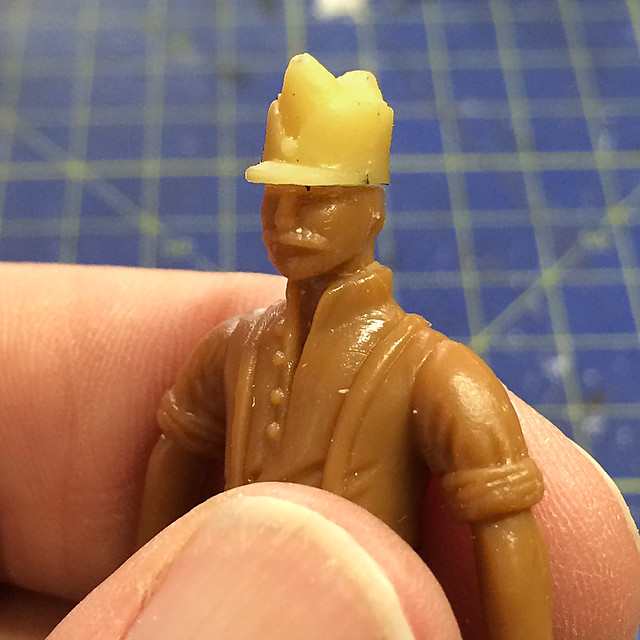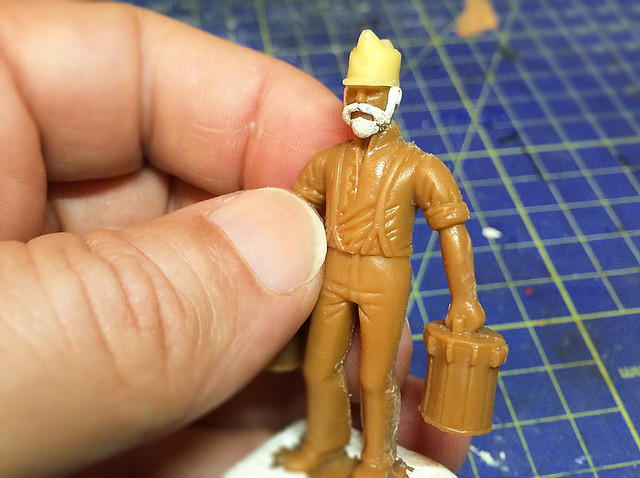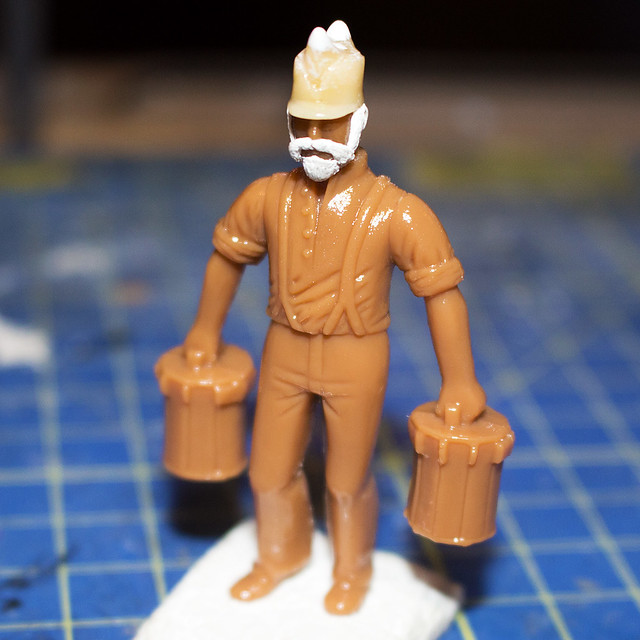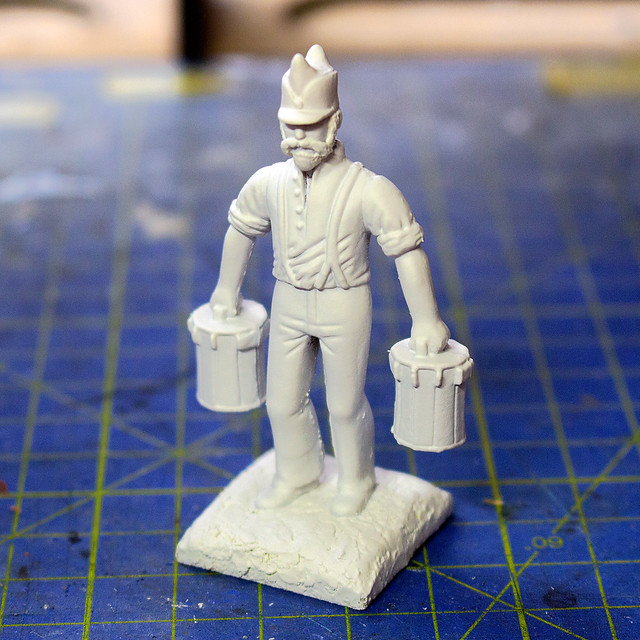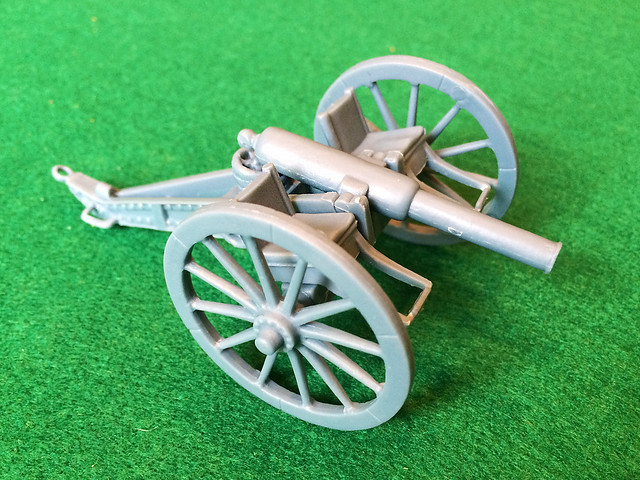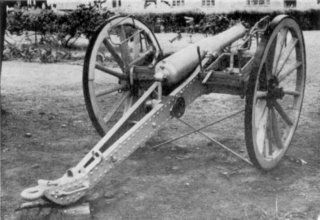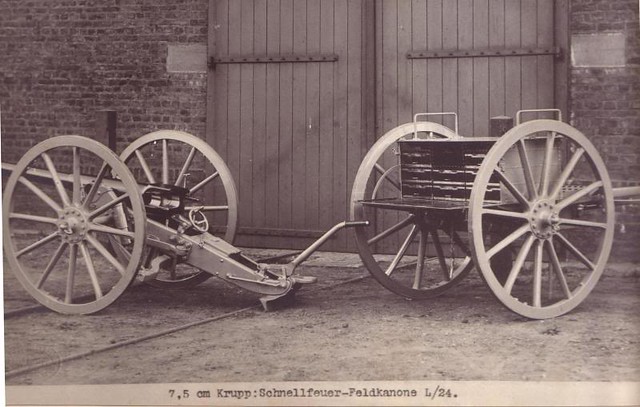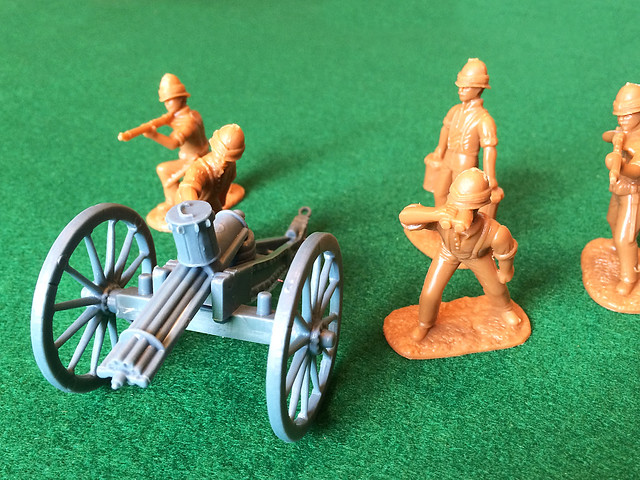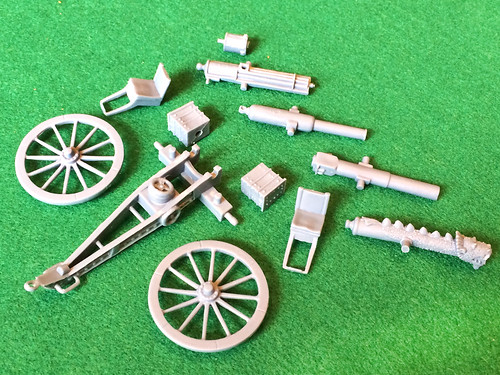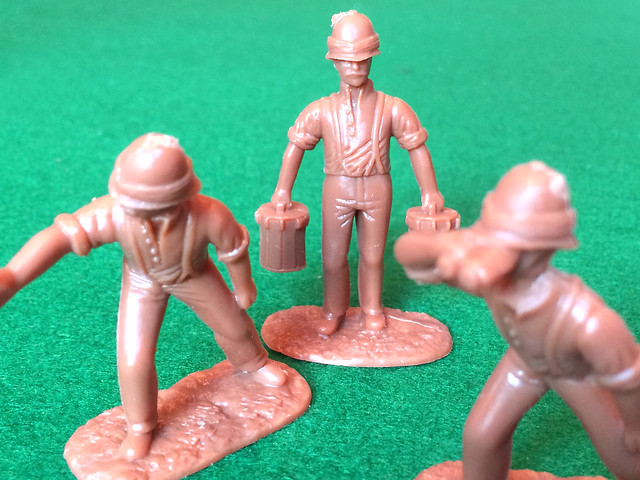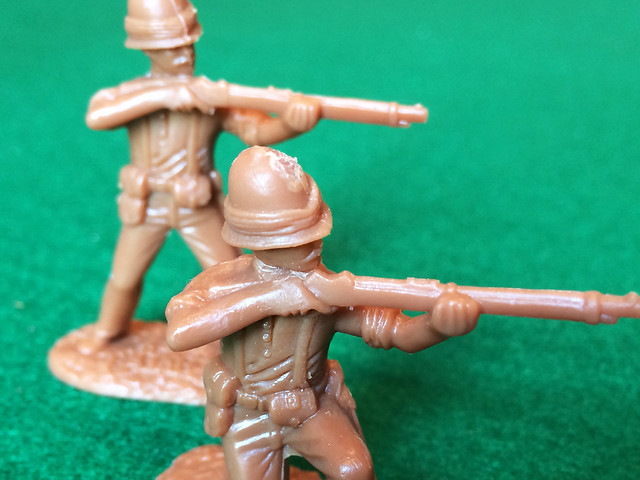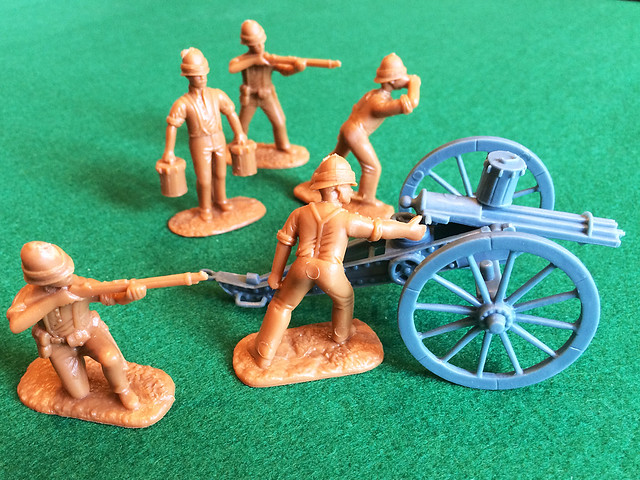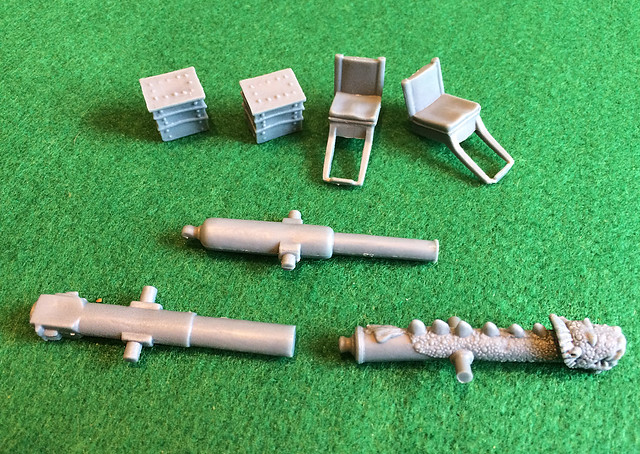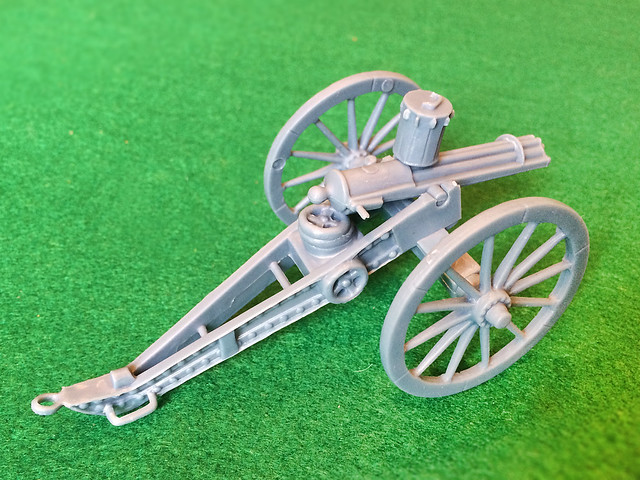In the end the fact that Armies in Plastic did not include any kind of historic description of the optional gun types that it includes in it's Gatling Gun set was too much for me and I went hunting around the internet for clues.
Disclaimer: First off, I am NOT an artillery expert, and neither do I know exactly what the AiP model designers had in their minds when they produced the set. So what follows is sheer speculation on my part, but I have tried to find the best historical match I could for the AiP gun types in the set. Please feel free to disagree with me.
Gun No. 1 - A British Boer War 7/9 Pounder?
Despite me not being an artillery expert I feel that I have to disagree with AiP on the designation of it's 'muzzle loader' barrel. Although they do not give a description of this gun as contained in the Gatling Gun set they have issued this gun in it's own separate set and described it as being a British
'7 Pounder'. If you look up British Boer War era 7 Pounders you may agree with me that this barrel looks too big to be a 7 Pounder so I have suggested here my own identification...
Despite the fact that Barrel No. 1 looks like a muzzle loading 'cannon' I went out on a limb and suggested in my early post on the AiP set that it was supposed to be - in fact - some sort of early 'screw breech' loader. It looks like I was wrong and despite the widespread deployment of breech-loading artillery by this time (c. 1899) the muzzle loader, it seems, had not completely disappeared!
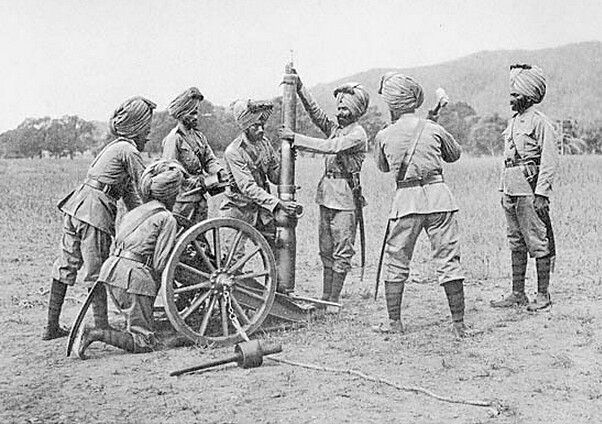 |
Sikh gunners assembling the RML 2.5 inch 'screw gun', circa. 1895.
This is more like the usual size of carriage of a 'mountain gun. |
"In 1877 Colonel Frederick Le Mesurier of the Royal Artillery proposed a gun in 2 parts which would be screwed together...The gun was a rifled muzzle-loader. Gun and carriage were designed to be broken down into their basic parts so they could be transported by pack animals (4 mules) or men. The barrel and breech were carried separately, and screwed together for action, hence the name "screw gun"." [Source: Wikipedia.]
Although these screw-gun variants were intended as fairly light 'Mountain Guns' - their disassembly allowing portability - there were some examples of larger 'medium' field calibre. I strongly suspect that the AiP model is one of these, and in particular I think it may be a 9 Pounder 8 CWT 'screw gun' mounted on an field carriage...
According to
The South African Military History Society this was an obsolete piece of equipment that was deployed with Colonial Forces (local forces serving on the British side during the Boer War). The Natal Volunteer Hotchkiss Detachment had one 9 pr at the Siege of Ladysmith.
This fits in nicely with the theme of AiP's 'Boer War - Gatling Gun - British Royal Artillery in "Shirt Sleeve Order" - 1899-1902' set. And modeller's would relish the idea of creating a scale re-enactment of the Siege of Ladysmith (
read the Wikipedia description of the siege via this link)!
However, conventional one-piece rifled 9 Pounder muzzle loaders were
also in British Serviceduring the Boer War. So the AIP muzzle-loading barrel might also be intended to be one of these...
 |
Conventional RML 9-pounder guns of the Northwest Mounted Police (NWMP)
Artillery Detachment, D & H Divisions with , Fort MacLeod, Alberta, 17 Dec 1890.
(Library and Archives Canada Photo, MIKAN No. 3574417) |
Wikipedia reference for the (non-screw)
British RML 9 pounder 8 and 6 cwt guns - these guns were obsolete by the Second Boer War (hence guns like it being relegated to Colonial forces perhaps). So if modelling the First Boer War of 1880-81 or colonial forces, or even pieces captured by the Boer from the second 1889 war this AiP barrel configuration is the most appropriate.
Gun No. 2 - A Boer 7.5cm Krupp L/24?
The second artillery barrel in the AiP set is obviously a proper breech 'block' loader. Now it's a very interesting design as the British breech loaders of the period were - it seems to me - still of the older 'screw breech' (round shaped) mechanism. So this 'square' breech may be another example of how the Boer Republican Army actually overtook the British technologically in some areas - as I suspect that this barrel may be a 7.5cm Krupp L/24!
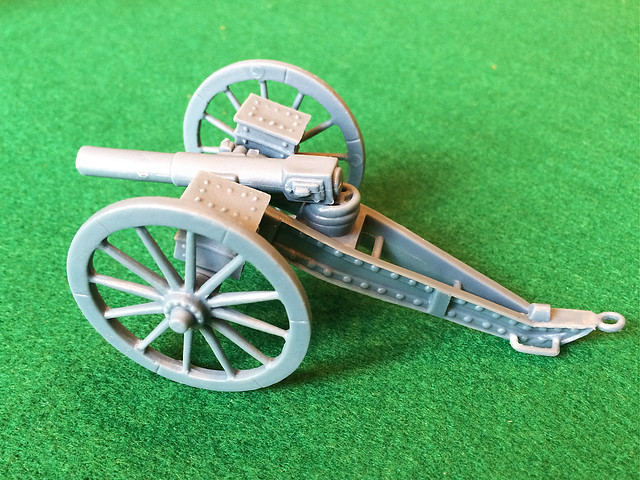 |
Ignore my erroneous addition of the Gatling Gun 'boxes', this
artillery piece should be fitted with the crew seats instead. |
Just as the Germans supplied the superb Mauser bolt-action rifle to the Boers - superior to the British rifles of the time - it seems that the Boer also had the benefit of a small number of Krupp Field Guns. According to the
Royal Australian Artillery Historical Company web site's artillery register entry for the 75 mm QF (Schnellfeuer-Feldkanone L/24) field gun...
"The assembly was known for its reliability and ease of movement, seldom requiring more than basic maintenance. The brass cartridge cases were filled with “ballistite” smokeless powder, and coupled with the gun’s small carriage and low mounting, made it ideal for Boer camouflaged gun tactics...Although outdated by European continental standards at the turn of the century, in Boer hands this gun was superior to the British 15 and 12-pr BL guns fielded against it. "
So this would be a nice model to pit against the British 9 pounder were you modelling a Boer army.
Photos of this gun from the period are a little blurry, but it looks to me like there is no additional carriage furniture used, so I would be tempted to trim off the fixing stumps which AiP has provided on the axel for the mounting of the crew seats. Here's the best quality photo I have found which, I think, illustrates the configuration of the Krupp gun on it's carriage...
Again, like the (alleged) 7 Pounder, the AiP 'Krupp' barrel looks a little chunky compared to the real thing. This may be to ensure that the soft plastic piece does not warp or bend, which is a nasty feature of soft plastic models.
I think this identification is pretty safe.
Gun No.3 - Boxer Dragon Gun?
Now, the identity of the last field gun option in the AiP Gatling set is probably the easiest to guess and yet hardest to confirm. Obviously the Dragon design of the barrel seems to be a clear indication that it is Oriental in origin and bearing in mind the historical military campaigns that AiP cover in their plastic soldiers range this would further narrow down the origin of the gun to the Boxer Rebellion (1899-1901).
 |
| Again, the Gatling boxes are not appropriate accessories. |
AiP already do several sets which cover this theme and as the Gatling Gun and other artillery pieces seem relevant to this period and conflict (used by the European Powers) then it seems logical that this barrel is included with the set.
Unfortunately, in this case, I have been unable to find a reference photo from that conflict which positively identifies this particular style of gun. Neither a web search or by consulting Osprey's Men at Arms No. 95 'The Boxer Rebellion' turned up a picture of a 'Dragon Gun'.
Indeed the only photo I have come across of Imperial Chinese troops with artillery is one which shows them remarkably well equipped with some Krupp breech-loading field gins!
[Men at Arms 'Boxer Rebellion', page 25.]
Still, it's a beautifully evocative model and you can imagine such a cannon in the use of the -normally - obsolescently equipped Boxers. It would make a wonderful diorama.
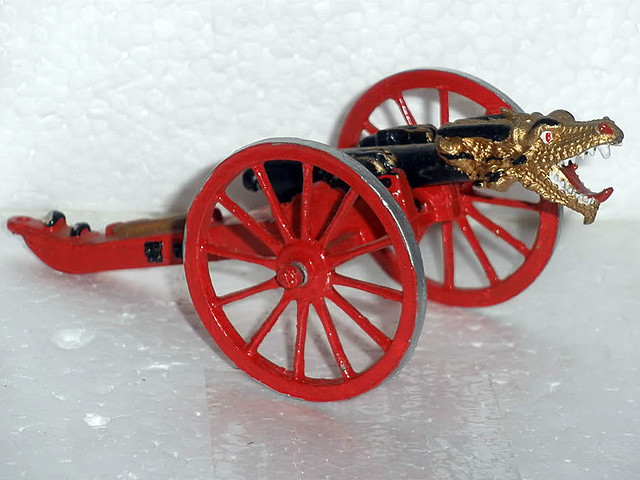 |
Unfortunately the only picture I could find on the web of a 'Dragon Gun' was this
spectacular metal model. Some nice ideas for painting the AiP gun!
Source: The Toy Soldier Forum |
So, I'm afraid I will have to admit defeat on this occasion (for the moment) and simply say that the design of this gun is at least in keeping or the spirit of the Boxer equipment of the time. But if I do come across (or if you know of) a piece of reference for this amazing field gun I will post up teh information at a later date.
